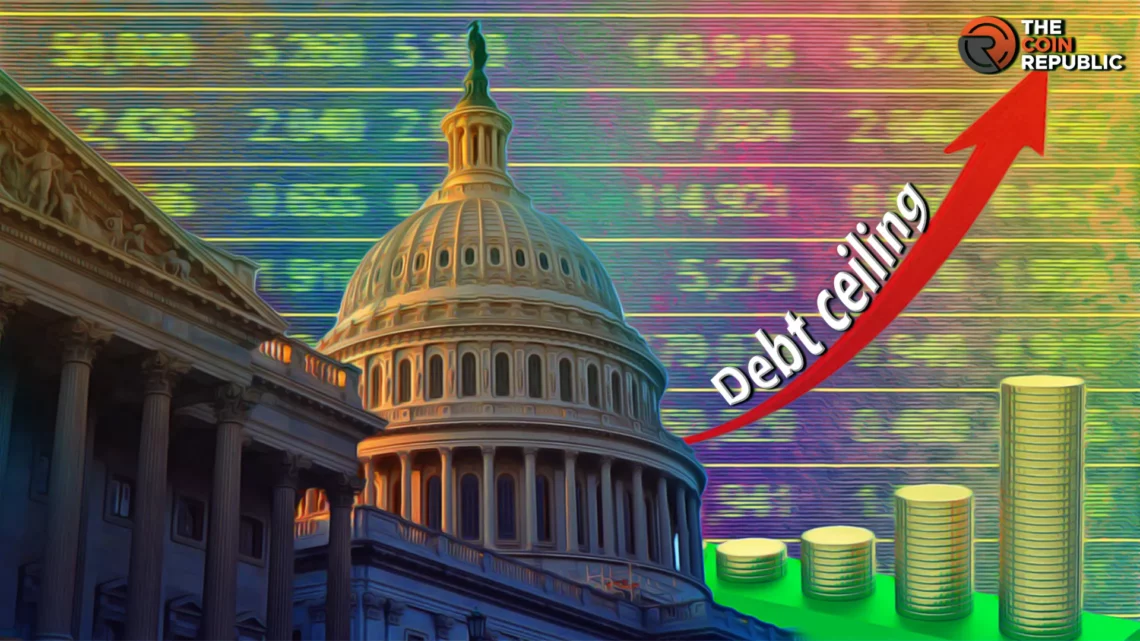- 1 The United States has been lifting its debt ceiling from time to time.
- 2 While it allows the country to fund its financial endeavor, it also raises some questions.
- 3 The experts try to analyze the ramifications of these consistent amendments.
The US debt ceiling has been in the news for some time now. For the uninitiated, the debt ceiling is the limit up to which a country can borrow money. Countries often tweak this limit when they absolutely need funds to support their economy. The United States has upped this threshold quite a few times now. A recent decision in this context has got many people worried.
US And Its Association With Ceiling Hike
Recently, the US government decided to suspend the debt limit till 2025. The amount of national debt has reached a whopping $32.6 Trillion now. Moreover, it plans to borrow an additional $1.89 Trillion in the latter half of 2023. So by the year-end, the United States would be laden with an even bigger debt profile. The ongoing situation raises one very important question. Why does the world’s superpower need to borrow so much?
The US government tends to its fiscal needs with short-term funding. The country seems to be taking a typical debtor move: take a new one to settle the old one.
This starts a neverending cycle of borrowing and paying. Before jumping to a conclusion and blaming the government, it’s important to understand the reason.
The Nitty-Gritty of Debt Ceiling
In 1917, the US government created the debt ceiling to make itself prudent in its spending. But since it was just another ruling of the constitution, it was subjected to amendments. Many leaders have debated over the constitutional validity of the debt ceiling. Most of the democratic nations in the world don’t have a debt ceiling. However, the US stuck to it to probably remind itself of its financial obligations.
The US Department of the Treasury has tweaked the ceiling 78 times since 1969. Now the governments obviously had strong reasons behind it. Yet, at this point, it’s important to take note of the merits and demerits of lifting the constraint.
Pros and Cons of Debt Ceiling
Pros:
The debt ceiling keeps the outlay of the nation in check and prevents it from going out of hand. It is helpful in funding the visionary endeavors of the country. It helps government continue to pass the benefits to citizens that require monetary support.
Cons:
The debt ceiling is quite easy to amend the ceiling with absolutely no debate or analysis. It impacts the credit rating while raising the debt burden of the country. It always raises the raises few eyebrows and brings up the question of the financial stability of the nation.
Aftermath of Defaulting the Debt Ceiling
Fortunately, the world hasn’t seen that happening yet. But in case the US fails to pay its debts, it would affect the whole world. In 2008, the great recession started in the US, and it devastated many nations. It is due to the dominance of the US Dollar and the country itself. The United States is very influential.
Most nations depend on it in some way or the other. Hence, they all will be deeply affected if the US is in a lurch. It seems that the recent tweaking has already shown some impact on the country. Recently, the global credit ratings agency Fitch has downgraded the US from AAA to AA+. While analysts make all types of predictions, only time will tell how this scenario will impact the world.

Nancy J. Allen is a crypto enthusiast, with a major in macroeconomics and minor in business statistics. She believes that cryptocurrencies inspire people to be their own banks, and step aside from traditional monetary exchange systems. She is also intrigued by blockchain technology and its functioning. She frequently researches, and posts content on the top altcoins, their theoretical working principles and technical price predictions.


 Home
Home News
News









